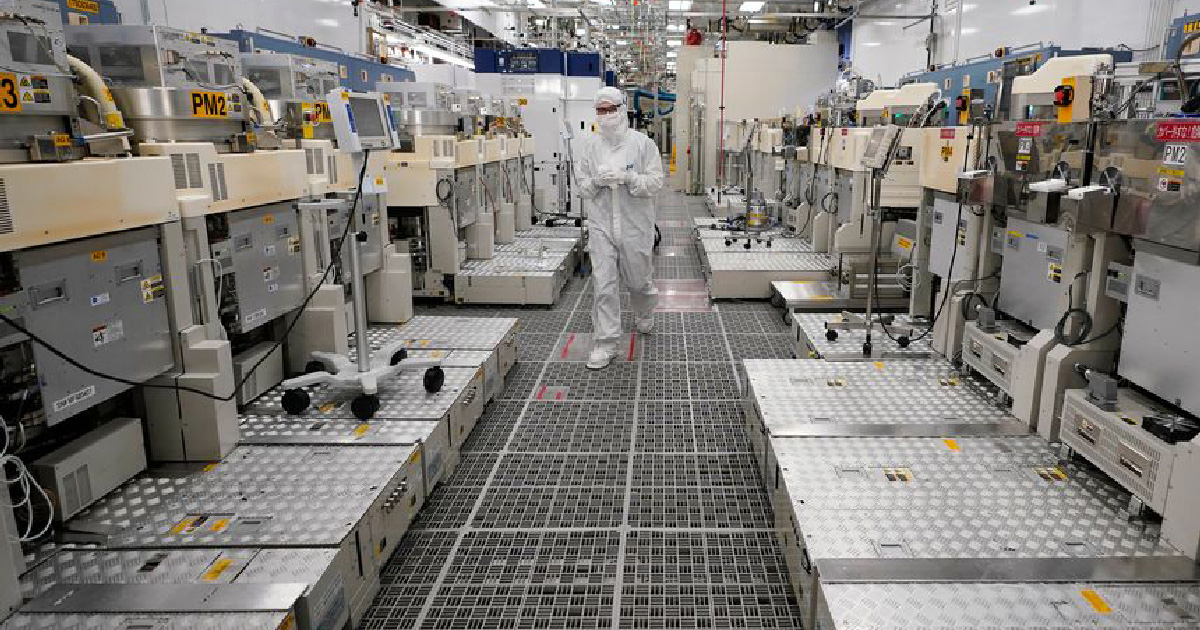
China's imports of semiconductor manufacturing equipment fell sharply in November, hit by U.S. export controls aimed at slowing China's technological progress.
Chinese customers bought $2.3 billion worth of chipmaking equipment in November, down 40 percent from a year earlier, according to China's General Administration of Customs.
Customs data showed semiconductor imports in November were the lowest since May 2020 and fell sharply from a recent peak of $4 billion in June 2021.
The drop in imports followed Washington's new curbs in October on exports of advanced-process semiconductors and chip-making equipment to China. The U.S. Commerce Department said at the time it wanted to prevent U.S. technology from being used to enhance China’s military and surveillance capabilities.
Before the export controls, China led the world in building new chip factories this year, topping U.S. chipmaking equipment companies Applied Materials Inc. (AMAT ), KLA Corp. (KLAC ) and Lam Research Corp. ( LRCX)'s largest export market.
Weak chip sales and an industry glut have chilled semiconductor producers around the world in recent days. In this context, China's purchase of these products was suddenly banned, which made the global chip business, which was already in a downward trend, even worse.
During the epidemic, the demand for digital products once soared, which led to a surge in demand for chips from electronic product manufacturers. And now, as consumer demand for smartphones or PCs retreats, those electronics makers are drawing down accumulated chip inventories rather than placing new orders.
The U.S. chip ban not only prohibits U.S. companies from exporting a range of chips and chip production equipment to China, but also prohibits exports to China if other countries use any U.S. technology to produce these products.
China's imports of chip-making equipment from major trading partners including the United States, Japan, South Korea and the Netherlands all fell after the new U.S. restrictions, according to data released by the Chinese government.
China's imports of U.S. chip-making equipment fell to $349 million in November, about half of what it was a year earlier, the data showed. That figure is down nearly 30 percent from imports in September, just before the new rules were announced.
Imports of chipmaking equipment from Japan fell 40 percent to $687 million in November. Meanwhile, equipment imports from South Korea plummeted 50% in November from September to $227 million. Japan is one of China's largest suppliers of chip-making equipment.
Chinese imports of chipmaking equipment from these countries have fallen, suggesting the U.S. move has had an immediate impact. Analysts believe that the cooperation of US allies is the key to the success of US export control measures.
The effectiveness of these rules has caught many in the industry by surprise. Chip manufacturing equipment companies have withdrawn employees from Chinese factories and suspended operations in China. The power of US export controls can be seen.
While export controls could hurt China and its ability to compete with the West in cutting-edge technology, the rules are wide-ranging and could also cost U.S. companies billions in lost sales.
In 2021, Chinese customers purchased $14.5 billion in equipment from Applied Materials, KLA and Lam, according to company statements from these companies.
All three companies have publicly commented on the impact of export restrictions introduced in October.
Lam Group said in October that affected by the new regulations, it expects revenue to be hit by $2 billion to $2.5 billion next year. Applied Materials said in November it could lose as much as $2.5 billion in sales in fiscal 2023 as a result of the measures. The company said it is seeking appropriate licenses and approvals. The export controls are expected to reduce sales by about $100 million in the quarter ended December, KLA said.


